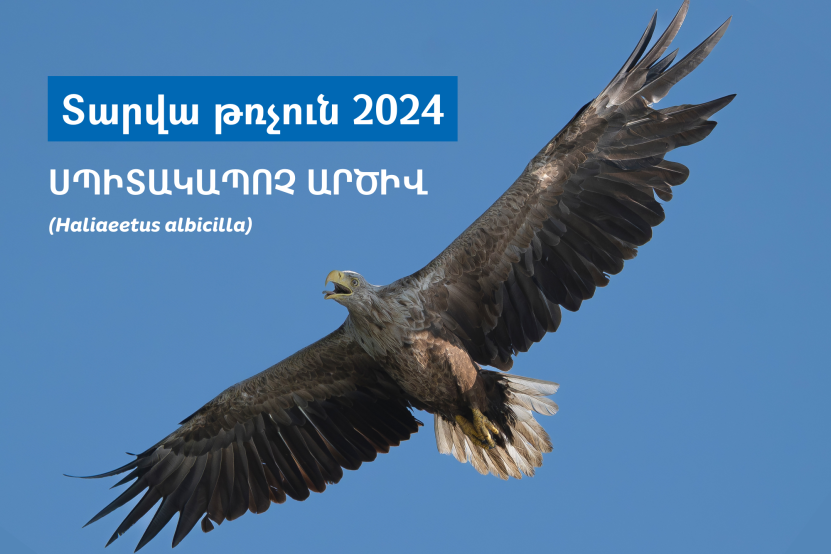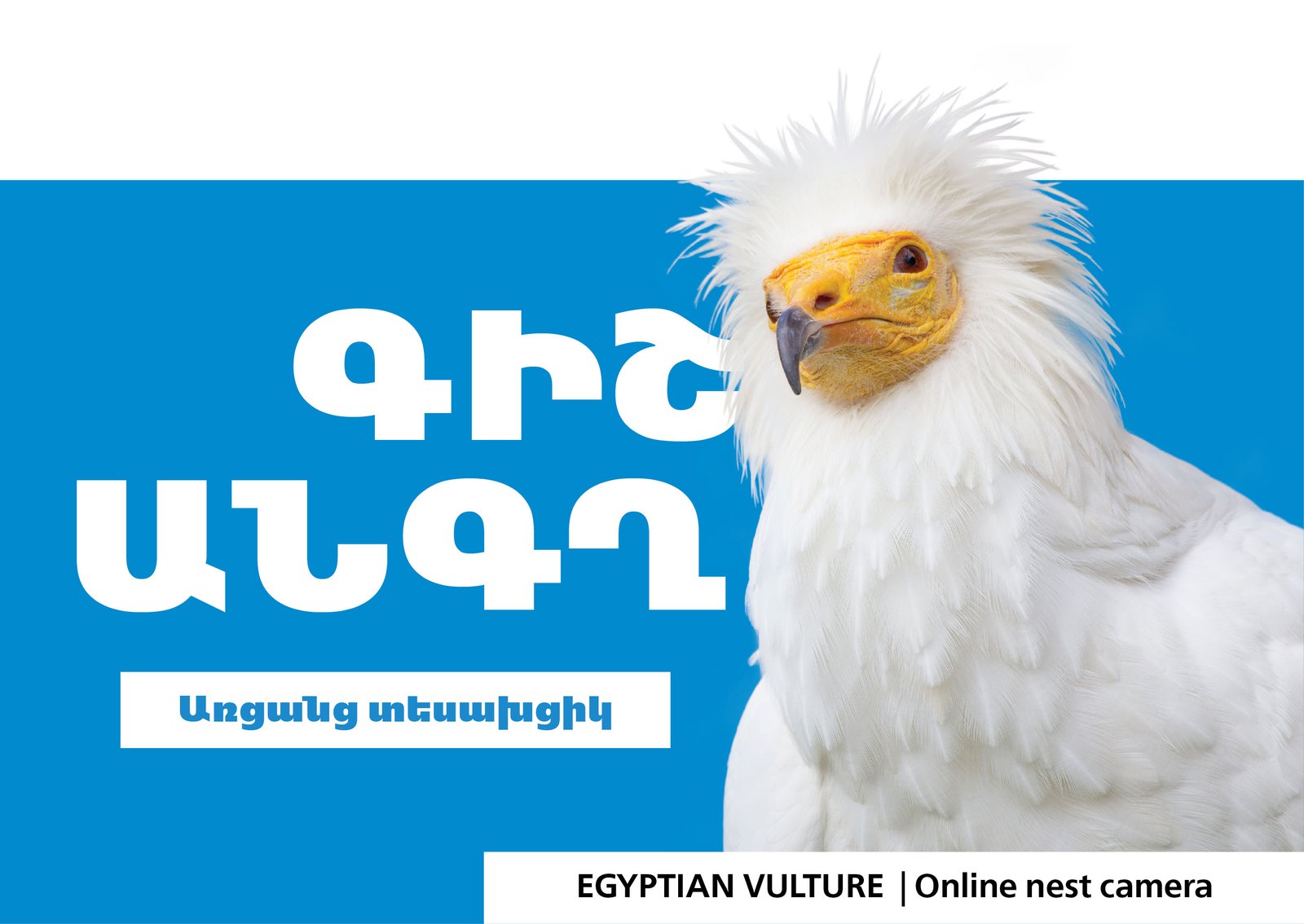
The bird publicly chosen as the Bird of the Year 2024 in the Republic of Armenia is the White-tailed Eagle, scientifically known as Haliaeetus albicilla. This predatory bird gracefully soars in the sky, symbolizing the strength and beauty of nature. Historically, this eagle holds a significant place in the culture, mythology, folklore, and heraldry of many nations, often representing power, authority, and wisdom.
Habitat
Adapted to various conditions, the White-tailed Eagle occupies diverse territories from the harsh coasts of Europe to the extensive forests of Asia. In Armenia, this eagle can be found in northern regions, in the Ararat Valley, the Vayots Dzor region, in the Vorotan River valley, and even in the vicinity of Yerevan. While this species used to nest in the Sevan Lake basin in the past century, recent observations in Armenia indicate its presence only during winter and migration. The White-tailed Eagle serves as a crucial ecological indicator, signifying a healthy natural environment.
Threats and Conservation Status
Thanks to conservation efforts, the White-tailed Eagle is now globally classified as "Least Concern" (LC) on the International Union for Conservation of Nature (IUCN) Red List. Populations, once threatened by habitat loss, direct persecution by humans, and pesticide use, are gradually recovering. Unfortunately, in Armenia the White-tailed Eagle is still classified as a "threatened" species, as it is rare in the country and reliable data on nesting is lacking. It faces numerous threats due to habitat degradation, water pollution, pesticide use, and human disturbance.
Diet and Hunting
As a true giant in the avian world, with a wingspan of almost two and a half meters and weighing up to seven kilograms, the adult White-tailed Eagle tops the food chain. Recognizable by its distinctive white tail, it effortlessly soars above water and, upon spotting prey, rapidly and precisely dives to capture it. While its primary diet consists of fish, it also feeds on various other animals, including waterfowl, small mammals, and carrion. Powerful talons and a hooked yellow beak enable the White-tailed Eagle to catch and securely transport food to the nest, where it requires up to twice as much food during the breeding season compared to winter months.
Reproduction and Nesting
The White-tailed Eagle attains sexual maturity relatively late, at around five years old, and then seeks a lifelong mate. During the breeding season, the eagle pair constructs large nests on tall trees or cliffs, occasionally on the ground, but predominantly near water bodies for easy access to their favored food—fish. In a nest used for many years, the female lays two to three eggs, and the pair incubates them for approximately 38 to 42 days. Both parents then participate in raising and feeding the chicks, providing protection and teaching them to fly.






